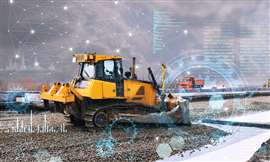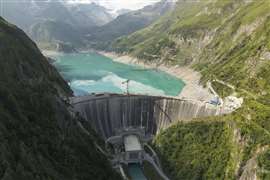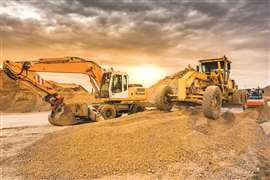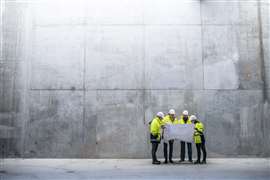What is construction equipment’s ‘killer app’?
29 August 2023
Do we know all the tech that’s going to change the construction equipment industry in the coming years? Or are there transformative technologies over the horizon that are going to change everything? Alan Berger and Carl Gustaf Goransson from specialist commercial vehicle advisory firm abcg give their perspective.
 Image: kosssmosss via AdobeStock - stock.adobe.com
Image: kosssmosss via AdobeStock - stock.adobe.com
As ex-US politician Donald Rumsfeld once famously said: “There are known knowns; things we know we know. We also know there are known unknowns; things we know we don’t know. But there are also unknown unknowns — the ones we don’t even know we don’t know.”
This quote could have been spoken about the future of the global construction equipment industry. There seems to be a consensus that the future is all about electromobility, automation and connectivity – but is that how it’s going to play out? And is there some other technology that is not getting as much press that could be even more impactful?
Alternative fuels
Alternative fuels are really an entire portfolio of technologies combined up to and including electrification, but ultimately this is ‘only’ about how we power machines. It is important for OEMs to invest here, those that develop the right technologies and machine architectures (mechanically and electrically) will generate the best benefits for themselves. As they develop, they will likely become better than diesel and give machines more flexibility and performance to do more – move dirt, drill holes, lift things, etc. But that said, alternative fuels feel like they will prolong the status quo – they will not really help construction take a quantum leap forward in performance.
Rise of the robots
Despite the flurry of excitement and reports of fully autonomous machines recently, automation as a technology has been with us for many years. It will be a process rather than an event.
 Carl Gustaf Göransson (Image supplied)
Carl Gustaf Göransson (Image supplied)
Does anyone remember 2D control systems that become available in the late 1990s?
Or perhaps simple things such as early return-to-dig controls enabled by proximity sensors and a hydraulic valve?
These were the start of a progression that is leading to more and more sophisticated automation. We believe the continued incremental development of these automation capabilities will be the mainstream of automation adoption.
This is aping its evolution in passenger cars – from basic cruise control that just held a speed to adaptive cruise control that adapts the speed to the traffic in front and now lane keeping assist that keeps the car centered in the lane is also commonplace.
Such automaton evolution does help enable new operators to be highly productive and can save money by optimizing material movement, so it is valuable. But, like alternative fuels, in the end we are still running basically the same processes, just a bit better.
Connectivity and data
Telematics as a technology has been around nearly as long as automation and – as stand-alone technology – it has a limited track-record of success.
Even so, we believe that the overall area of data will have the most impact on construction.
Most studies on technology benefits and adoption point to tools such as digital workflows, integrated project management tools, BIM and related technologies as the most adopted and beneficial.
Take the use of BIM data. Picture in a foreseeable future an excavator equipped for demolition deconstructing a property.
The machine will have the complete drawings of the building in BIM format. By having this data at hand – for instance all electricity wiring and piping – it can operate much more efficient and safely resulting in higher productivity.
It’s not just about data in isolation – it’s about getting the right data into the hands of the people that need the data, when they need the data.
What’s missing?
 Alan Berger (Image supplied)
Alan Berger (Image supplied)
This is the start of the lean metamorphosis of the construction industry – the same change that has been underway for over 20 years in factories and has driven massive productivity improvements and changed factory floors all around the world.
Construction has lagged in its ability to drive efficiency, due to the customized nature of most construction projects and the relative unpredictability of the typical construction site.
With better digital modelling tools, cloud-based data sharing and AI driven perception technologies construction is nearly ready for its next era. What is missing to enable this complete transformation?
- Insights instead of data – Today telematics and other systems provide lots of data, but turning this into action takes specialists. Automating this step so that the computer provides operational suggestions (like ‘add another ADT to increase productivity’) will make the technology deliver measurable business results for most contractors. There are some startups and others working on AI solutions to do just this, but it is not yet mature nor mainstream.
- Simple ways to connect tools and machines from different suppliers – today’s workflow is typically a combination of software tools from different vendors and machines from different manufacturers. Getting consistent data across these platforms and then sharing it is very complex today and requires dedicated people with deep technical knowledge. There is a race on between some of the telematics, technology, and cloud providers to do exactly this. Will one win out and become the standard data integration platform for the industry?
- Skills and training across the entire chain from dealers to contractors – Even if the first two challenges are solved, dealers and contractors will need to become more tech savvy. While most recognise the need, they are challenged to find the training or people with the training. This is a great opportunity for the technology focused machinery OEMs and technology providers to step in and provide support.
These are just a few of the ‘known knowns’. It doesn’t lay claim to being a comprehensive list.
An unknown unknown might pop up, but we doubt it. The reality in most areas will be prosaic – more and better of what we have now – more steady evolution than overnight revolution.
But data, if properly embraced, could – when combined with automation and new forms of propulsion, really be a game changer for the industry.
Alan Berger and Carl Gustaf Göransson are managing partners of the commercial vehicle advisory practice abcg.
STAY CONNECTED


Receive the information you need when you need it through our world-leading magazines, newsletters and daily briefings.
CONNECT WITH THE TEAM










